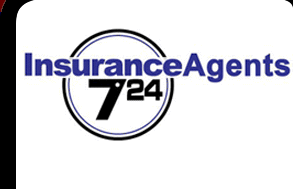 |
|
 |
 |
|||||||
 |
 |
|||||||||
![]()
Established in 1919, our client is a property-casualty insurance company with over one billion in assets. One of its subsidiaries was chartered in 1980. It handles third-party claims administration for several hundred self-insured companies in Pennsylvania, New Jersey and Maryland. The parent company and the subsidiary had their own independent claims processing systems, but these aging systems were inflexible and out-of-sync with the real business needs of staff, management and agents. Expensive “work-arounds” had been developed and maintained over the years to address the systems’ shortfalls. Staff often turned to paper files in order to respond to customer inquiries. Agents had to resort to calling customers back to collect and clarify information. Agents and customers alike were increasingly frustrated by the lack of reliable, fast claims handling and customer service. An internal team with representatives from the Claims Division, the subsidiary and IT was assembled to come up with the most cost-effective way to streamline and accelerate claims processing and improve customer service response time.
Solution
The client’s internal team developed a strong business case for implementing a centralized claims and imaging solution that would address the carrier’s needs. Info24 assisted with drafting the functional specifications and cost benefits analysis for this solution. We then led the Vendor Selection and Evaluation process for this project using its proven set of assessment techniques, which included:
- Comprehensive Industry and Software Research
- Vendor Surveys
- Hands-on Product Demonstrations
- Vendor History and Performance Scorecard Analysis
- User Reference Checking
- SWOT (Strengths, Weaknesses, Opportunities & Threats) Risk Rating Analysis Functional & Technical Weighting & Scoring
We deftly ran the vital Request for Proposal (RFP) process, assuring a level playing field for all vendors while serving the client’s best interests objectively and efficiently.
Results
Our systematic approach to vendor selection and evaluation and experience with running RFPs allowed the client to have:
1. An Efficient and Effective Vendor Selection and Evaluation Process
We reduced the number of known vendors to
a manageable size and eliminated those vendors who were not capable of
meeting our client’s requirements. Because of our involvement, the client assessment team made better use of their limited
time, focusing only on those candidates that could provide a solution
and maintain the overall project momentum.
Acting as an objective, single point of contact for vendors during the
RFP stage, we ensured a level playing field for all participants.
Each vendor was required to sign a non-disclosure agreement (NDA) and
intent to bid.
2. Quicker User Adoption and Enhanced Outsourcing Partnership
We arranged and managed the multiple vendor visits to the carrier for demonstration and proposal presentations. The "hands-on" workshops allowed the various stakeholders to participate, analyze and compare the different solutions. This direct contact with the software and vendors proved to be a seedling for the smooth transition and widespread user acceptance of the new systems.
Other important stakeholders included the in-house, technical resources. They were given direct access to the competing vendors as part of the RFP process. The technical staff was given the opportunity to drill down into the architecture, design and integration requirements for each solution offered. These sessions resulted in a clearer understanding the overall technical effort and resource requirements for the project. Additionally, the internal project team was able to meet and dialogue with some of the vendor resources that would be involved later during the implementation phase. When the final vendors were chosen for the claims and imaging, a sense of partnership had already been established between the carrier and vendors, which made for a faster and cleaner project kick-off.
3. Cost-Effective and Painless Negotiations
We set the right tone for negotiations by making sure each vendor offered the client their solutions at a fair price. By helping our client clearly define its requirements and scope, we positioned the carrier to get the best deal possible from its vendors. The well-run RFP further minimized risks and uncertainty for all parties. Pleased with the final deal that was inked, everyone walked away from the table smiling.
| client successes | offerings | about us | contact us | home | ||||
| Site designed and developed
by Info724 Ltd. © 2007. All rights reserved. |
||||



